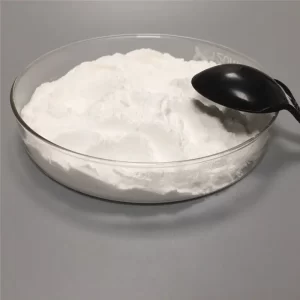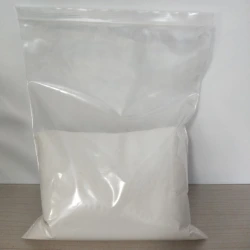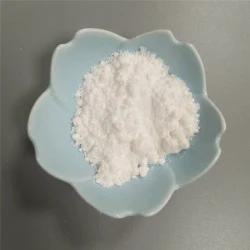Buy Glycerol Glycerine/ CAS NO. 56-81-5/ factory supply
Buy Glycerol Glycerine CAS-56-81-5. Buy Glycerol Glycerine/ CAS NO. 56-81-5/ factory supply. Glycerolalso called glycerine in British English and glycerin in American English, is a simple polyol compound. It is a colorless, odorless, viscous liquid that is sweet-tasting and non-toxic. The glycerol backbone is found in lipids known as glycerides. Because it has antimicrobial and antiviral properties, it is widely used in FDA approved wound and burn treatments. Conversely, it is also used as a bacterial culture medium. It can be used as an effective marker to measure liver disease. It is also widely used as a sweetener in the food industry and as a humectant in pharmaceutical formulations. Because of its three hydroxyl groups, glycerol is miscible with water and is hygroscopic in nature. Buy Glycerol Glycerine CAS-56-81-5
-
Appearance: Liquid
-
Formula: C3H5(OH)3
-
Melting point:18 (degrees Celcius)
-
Boiling point:290 (degrees Celcius)
-
Density:1.26g/cm3
-
CAS No.: 58-81-5
What is Glycerin?
Uses of Glycerin
Buy Glycerine from Trusted Chinese Chemical Suppliers
Glycerol Production Methods
Synthetic glycerol
Quick Details Glycerol Glycerine CAS-56-81-5
- Classification: Pharmaceutical Intermediates
- Cas NO.: 56-81-5
- Name: Glycerol
- Molecular Formula: C3H8O3
- Melting Point: 18℃
- Boiling Point: 290℃
- Refractive index:1.452-1.475
- Flash Point: 160℃
- Purity: 99%
- usage: For medical research
- Brand Name: IPURE
- EINECS: 200-289-5
- Aliase: Glycerin
- Purity: 99%
- Appearance: liquids
- inventory: in stocks
- Packaging Detail: 1KG/Bag
- Delivery Detail: by express
-
Structure of Glycerol Glycerine CAS-56-81-5
Although achiral, glycerol is prochiral with respect to reactions of one of the two primary alcohols. Thus, in substituted derivatives, the stereospecific numbering labels the molecule with a “sn-” prefix before the stem name of the molecule. Buy Glycerol Glycerine CAS-56-81-5
Production of Glycerol Glycerine CAS-56-81-5
Glycerol is generally obtained from plant and animal sources where it occurs in triglycerides, esters of glycerol with long-chain carboxylic acids. The hydrolysis, saponification, or transesterification of these triglycerides produces glycerol as well as the fatty acid derivative:Buy Glycerol Glycerine CAS-56-81-5
Triglycerides can be saponified with sodium hydroxide to give glycerol and fatty sodium salt or soap.Typical plant sources include soybeans or palm. Animal-derived tallow is another source. Approximately 950,000 tons per year are produced in the United States and Europe; 350,000 tons of glycerol were produced per year in the United States alone from 2000 to 2004. The EU directive 2003/30/EC set a requirement that 5.75% of petroleum fuels were to be replaced with biofuel sources across all member states by 2010. It was projected in 2006 that by 2020, production would be six times more than demand, creating an excess of glycerol as a byproduct of biofuel production. Buy Glycerol Glycerine CAS-56-81-5
Glycerol from triglycerides is produced on a large scale, but the crude product is of variable quality, with a low selling price of as low as 2–5 U.S. cents per kilogram in 2011. It can be purified, but the process is expensive. Some glycerol is burned for energy, but its heat value is low. Buy Glycerol Glycerine CAS-56-81-5
Crude glycerol from the hydrolysis of triglycerides can be purified by treatment with activated carbon to remove organic impurities, alkali to remove unreacted glycerol esters, and ion exchange to remove salts. High purity glycerol (> 99.5%) is obtained by multi-step distillation; a vacuum chamber is necessary due to its high boiling point (290 °C). Buy Glycerol Glycerine CAS-56-81-5
Synthetic glycerol Glycerol Glycerine CAS-56-81-5
Although usually not cost-effective, glycerol can be produced by various routes from propene. The epichlorohydrin process is the most important: it involves the chlorination of propylene to give allyl chloride, which is oxidized with hypochlorite to dichlorohydrins, which reacts with a strong base to give epichlorohydrin. This epichlorohydrin is then hydrolyzed to give glycerol. Chlorine-free processes from propylene include the synthesis of glycerol from acrolein and propylene oxide.






Reviews
There are no reviews yet.